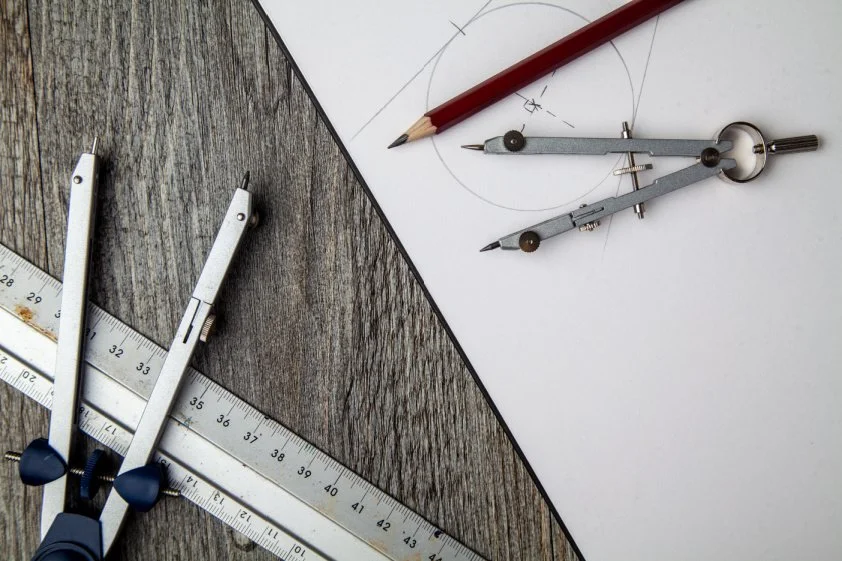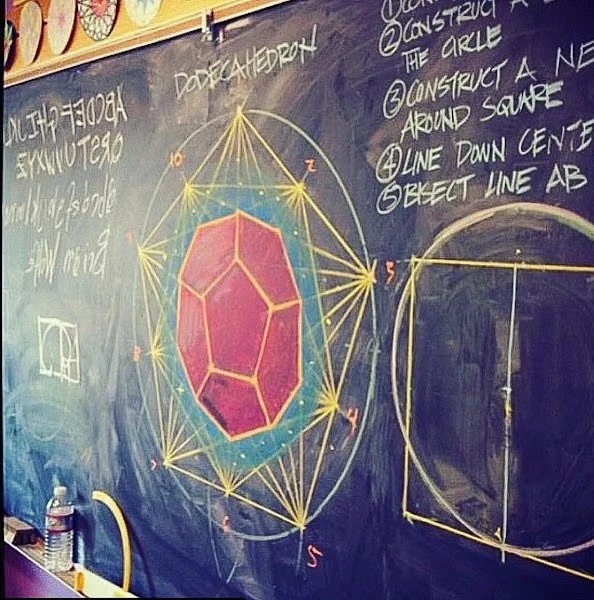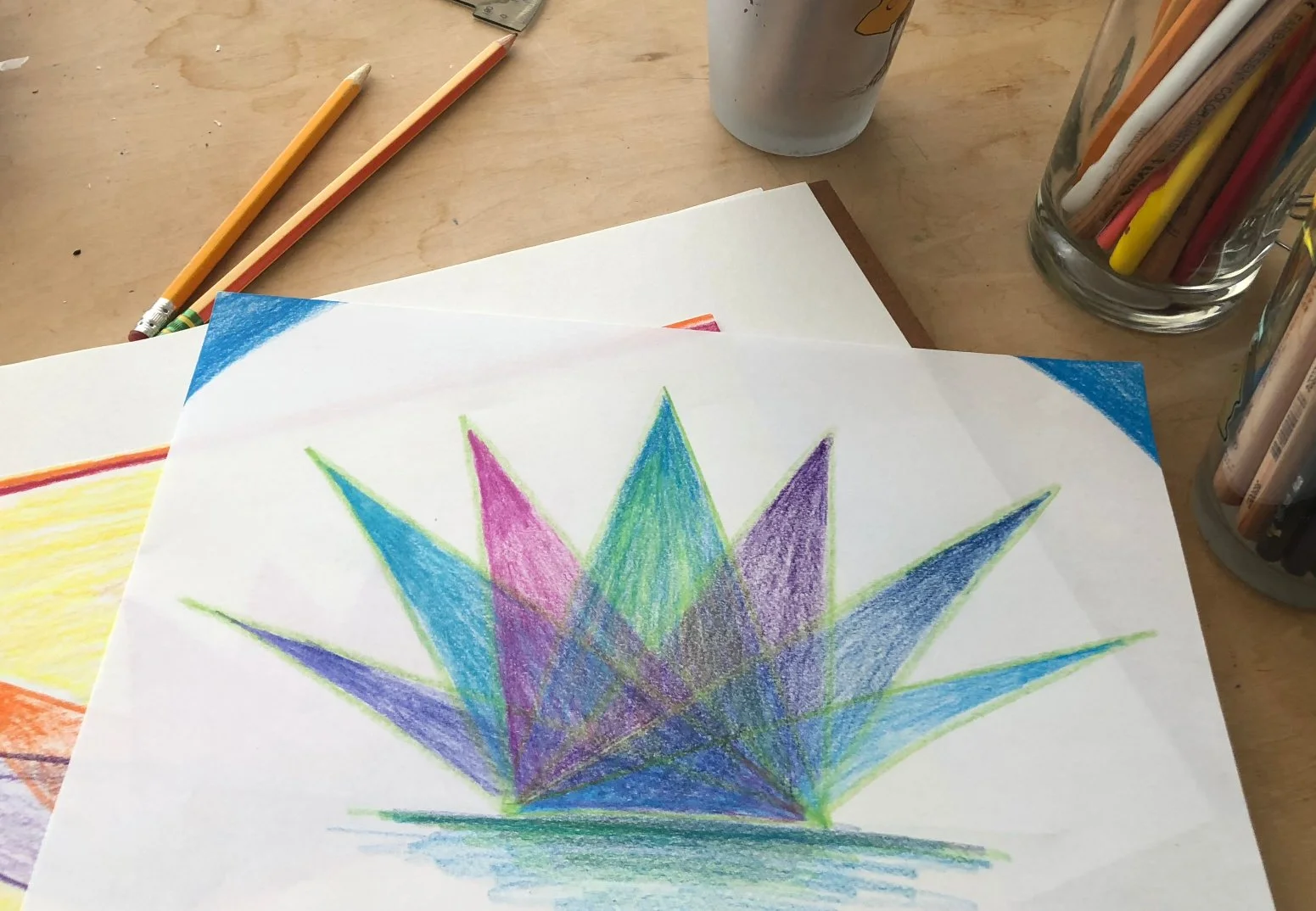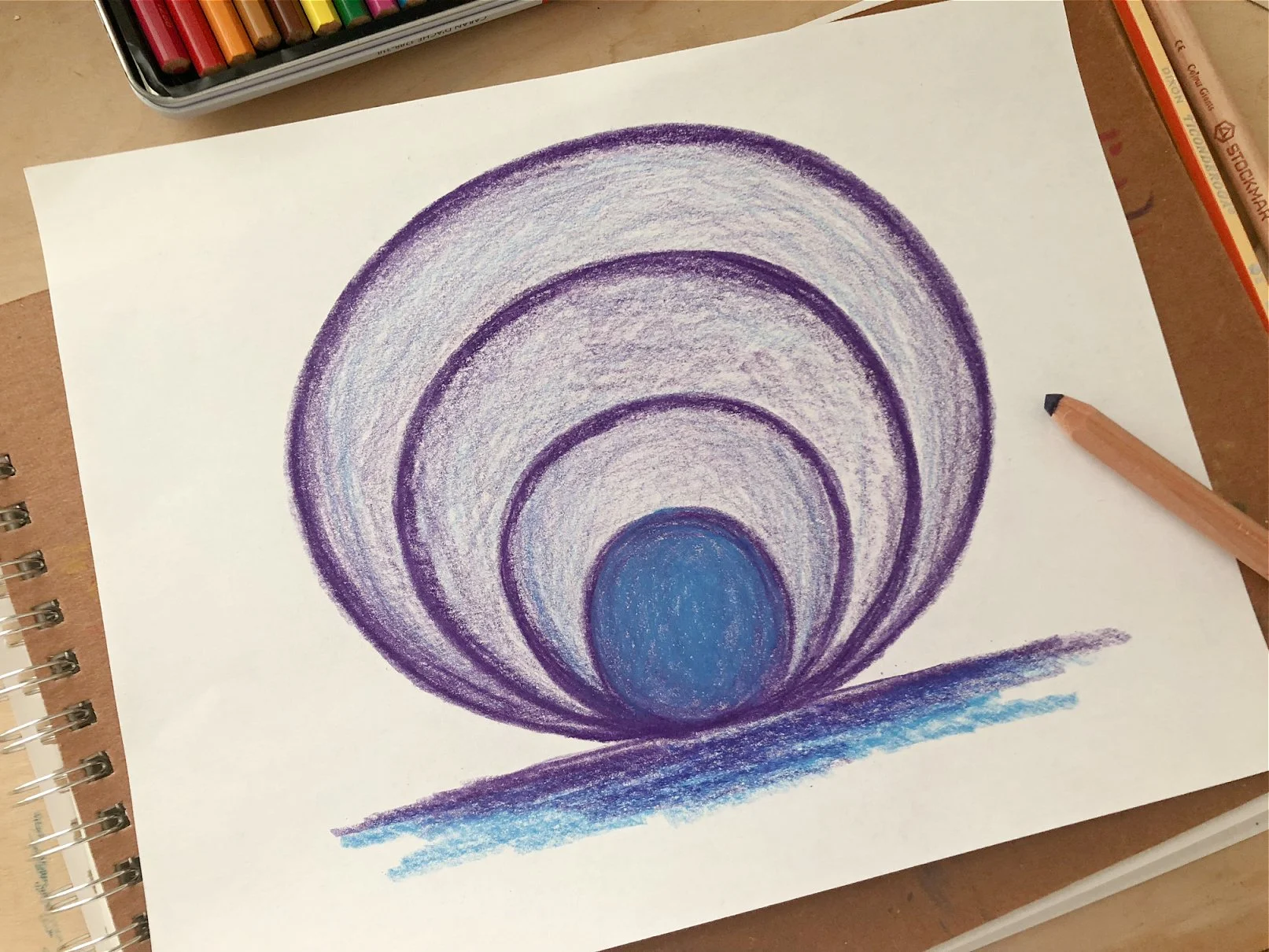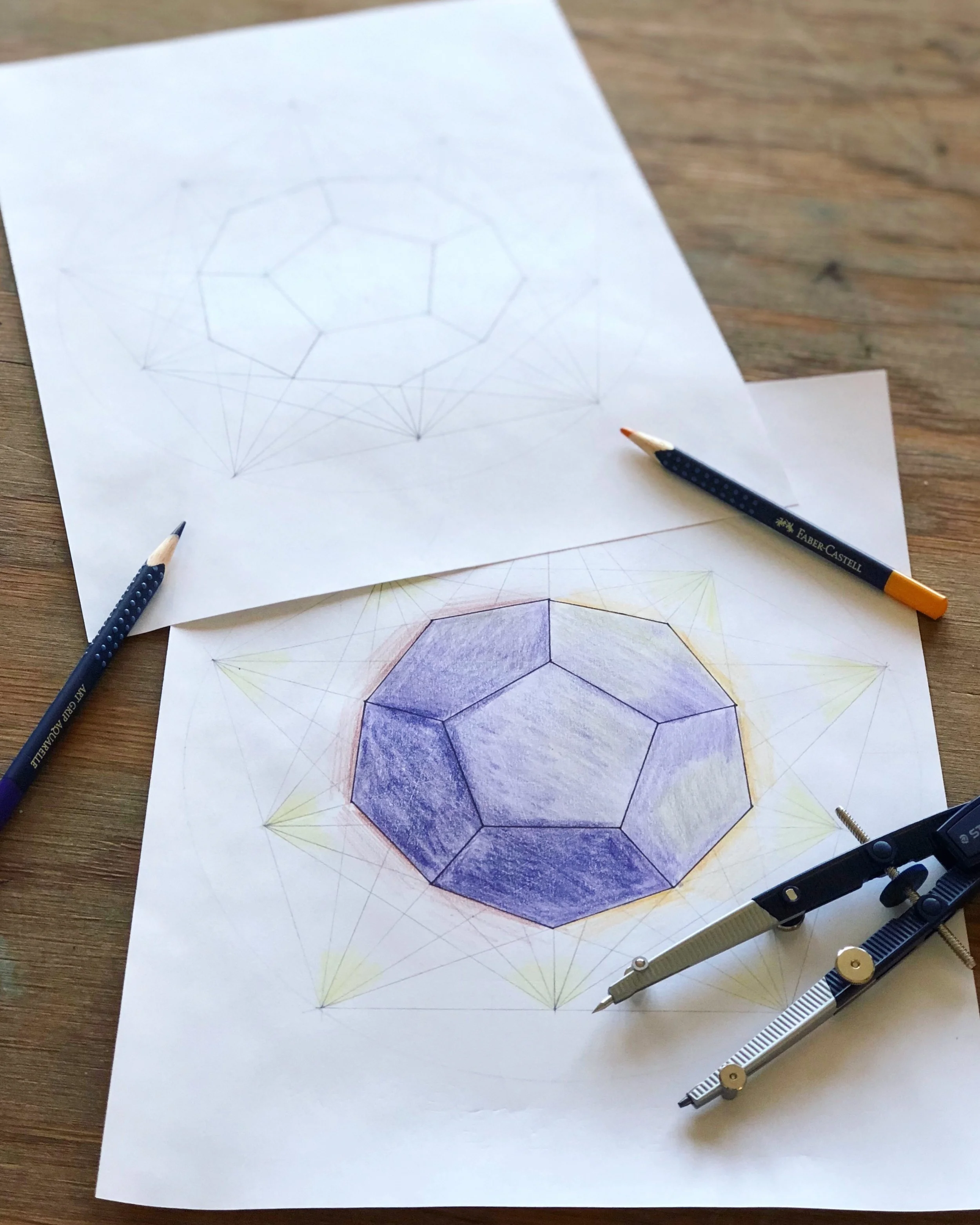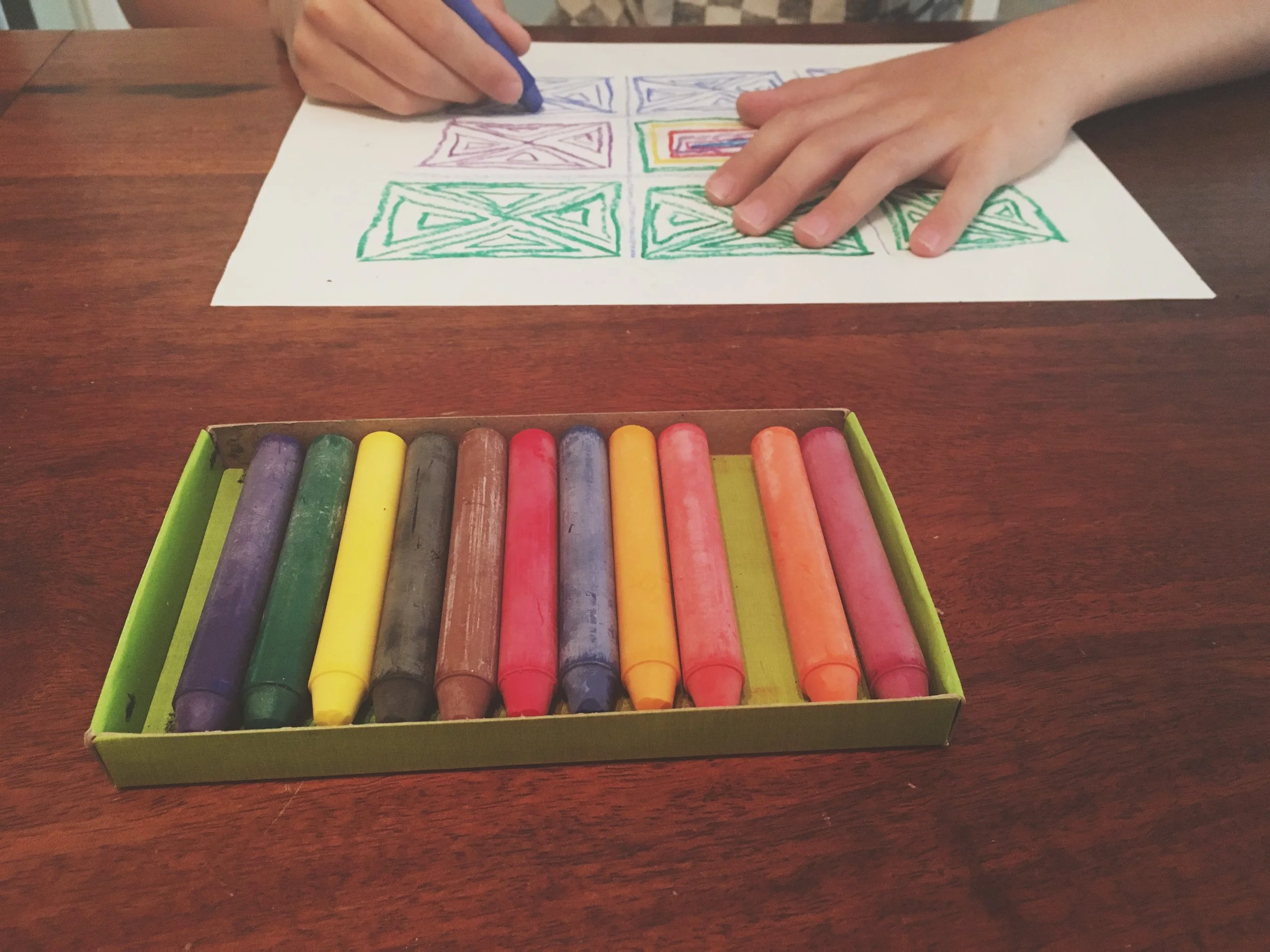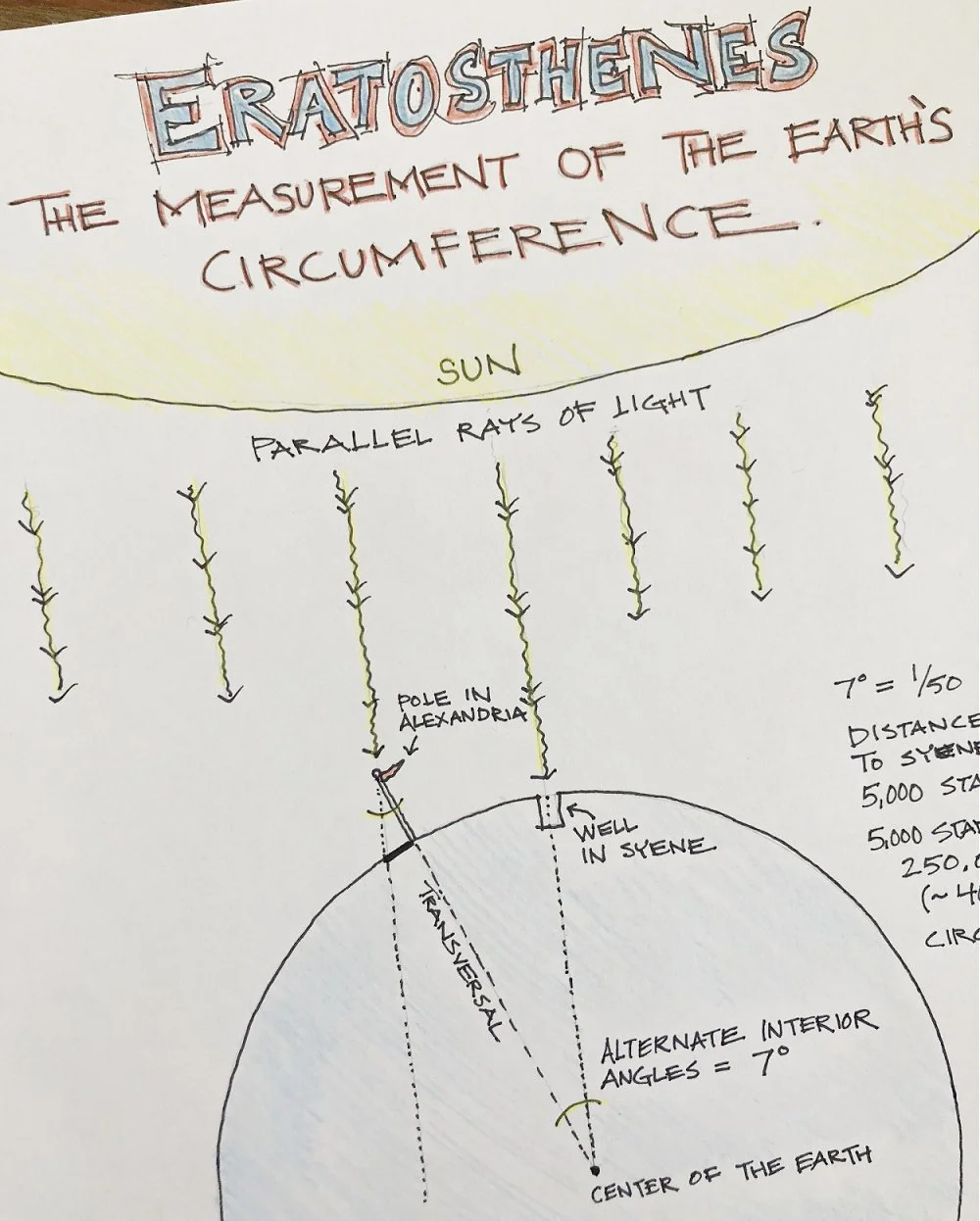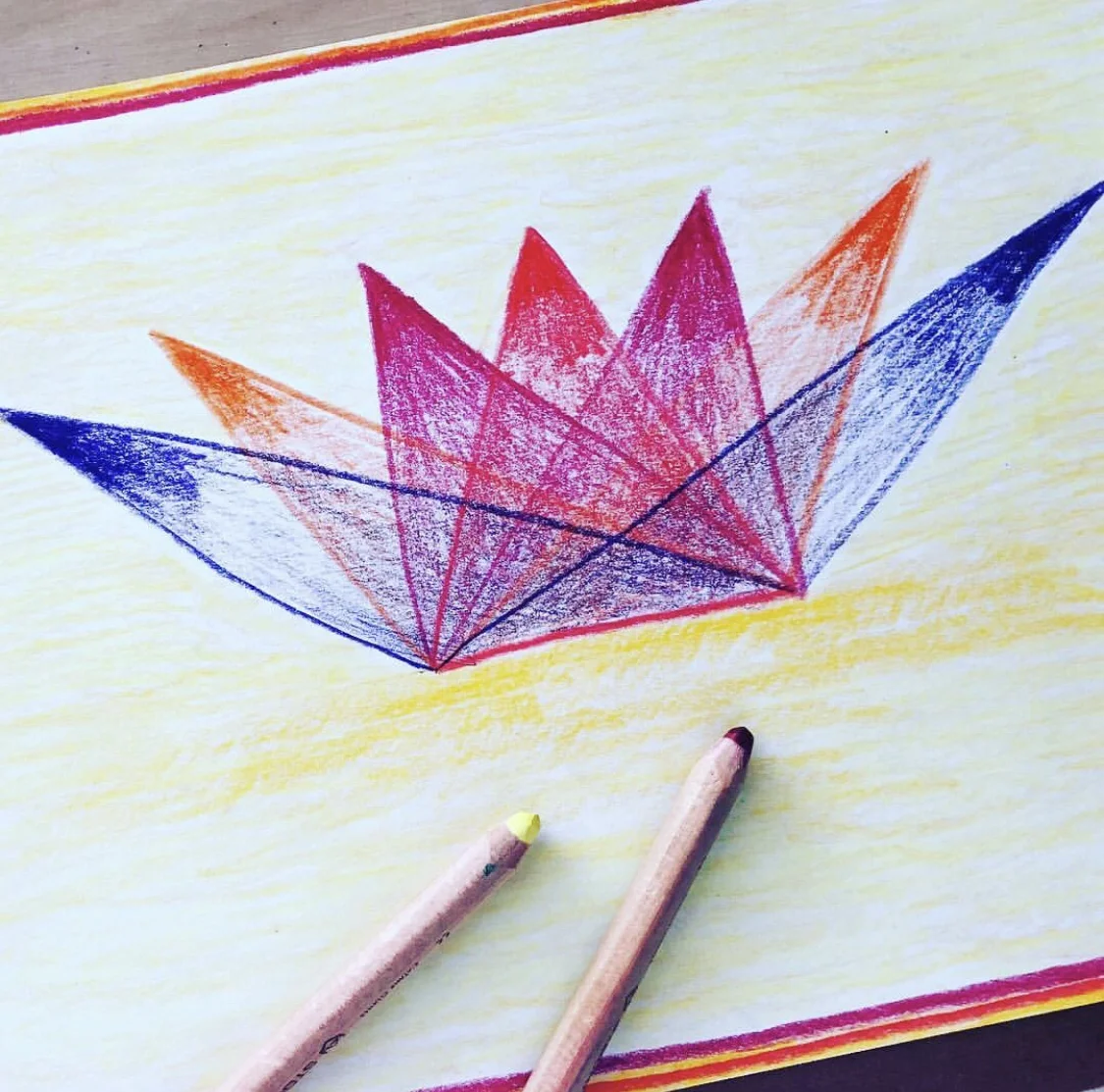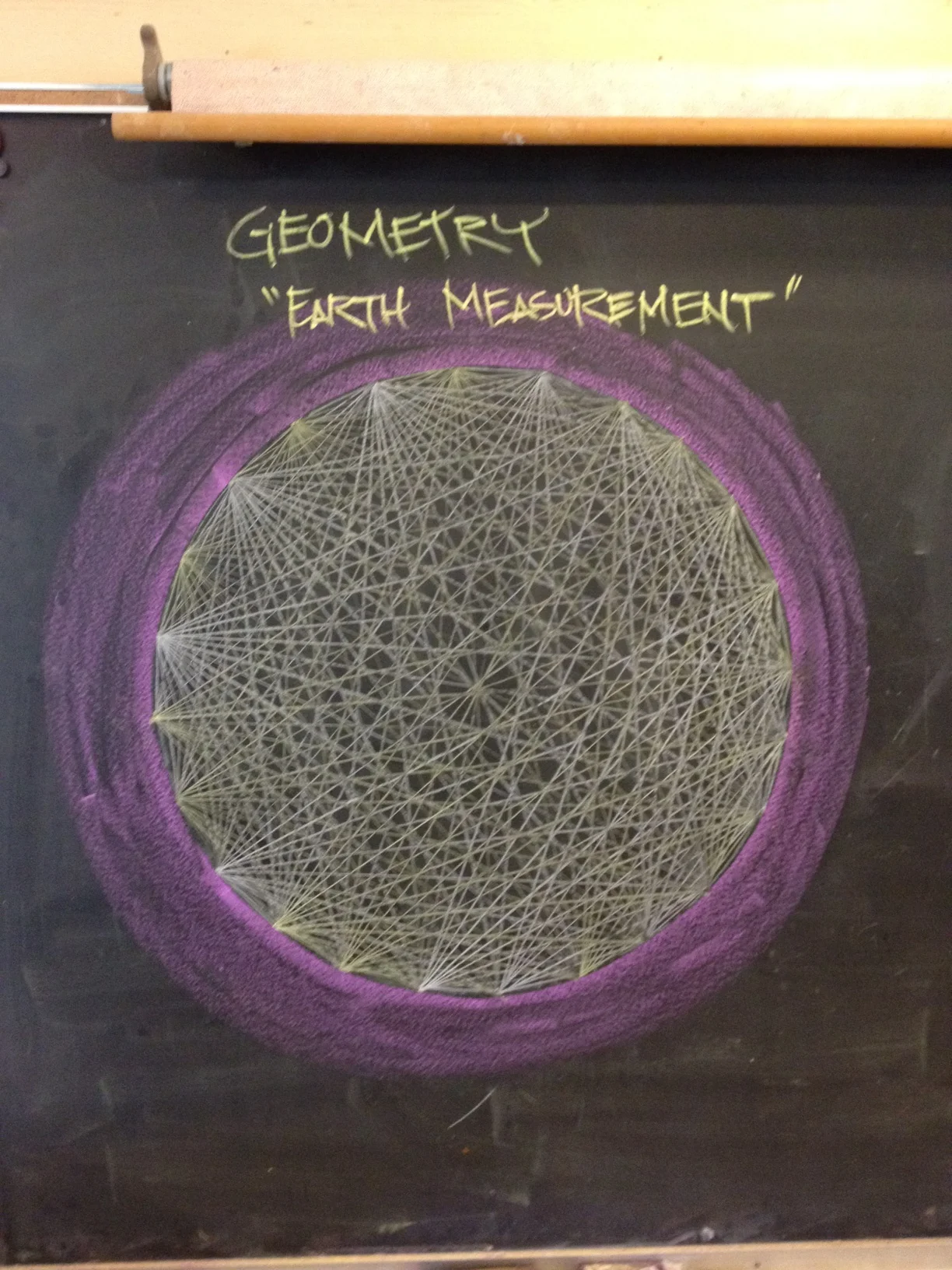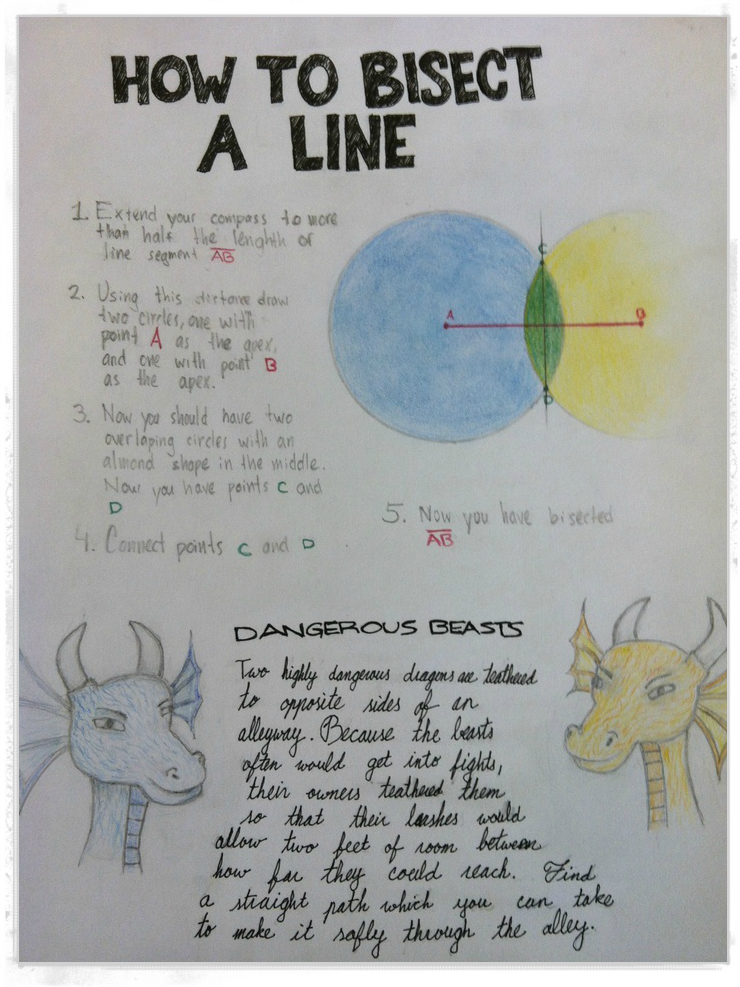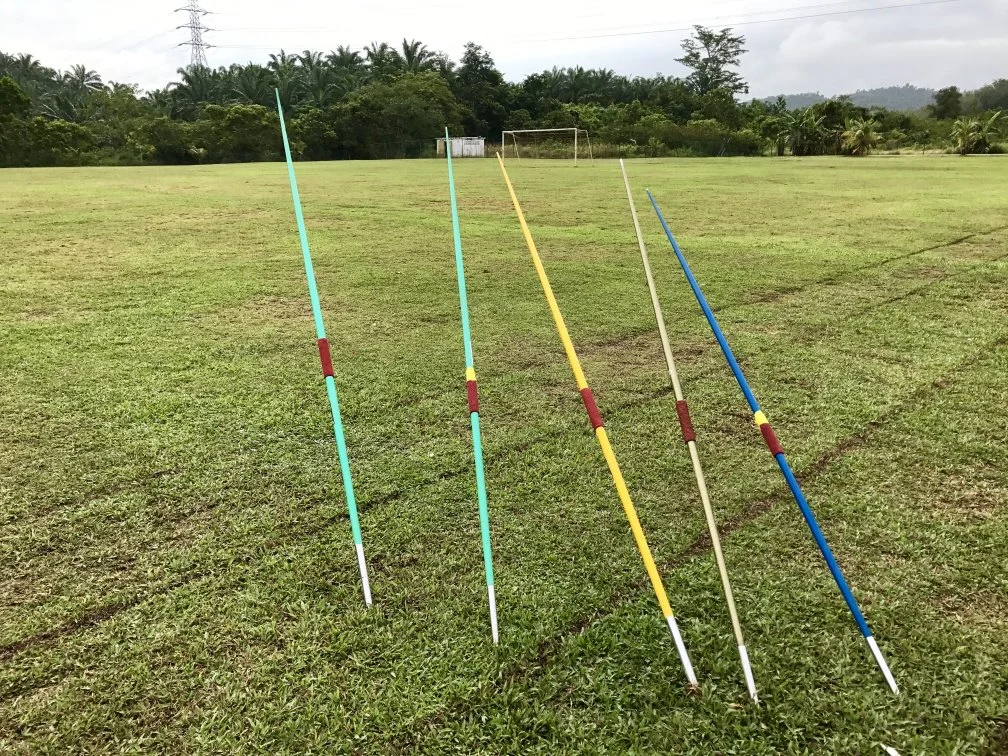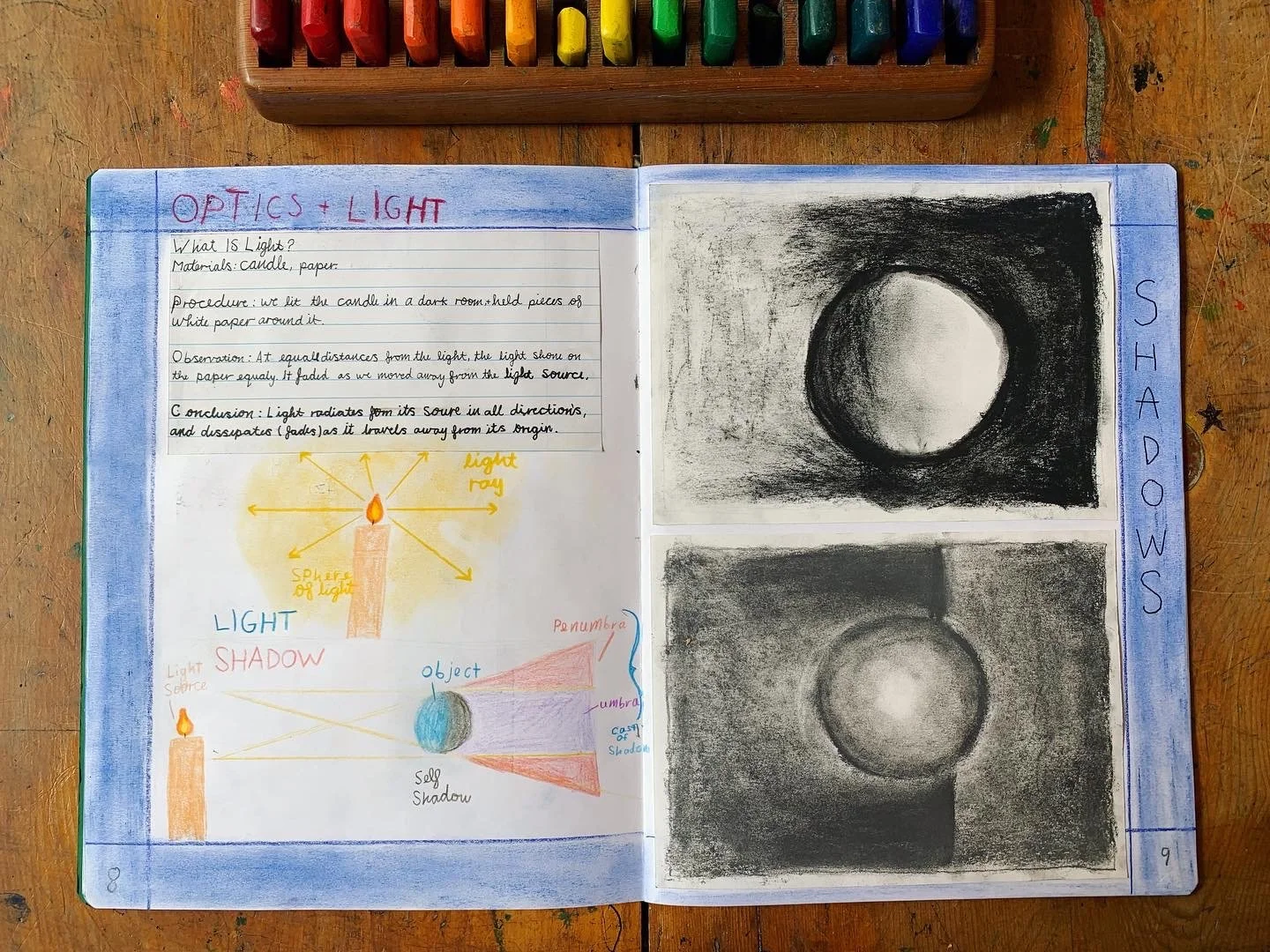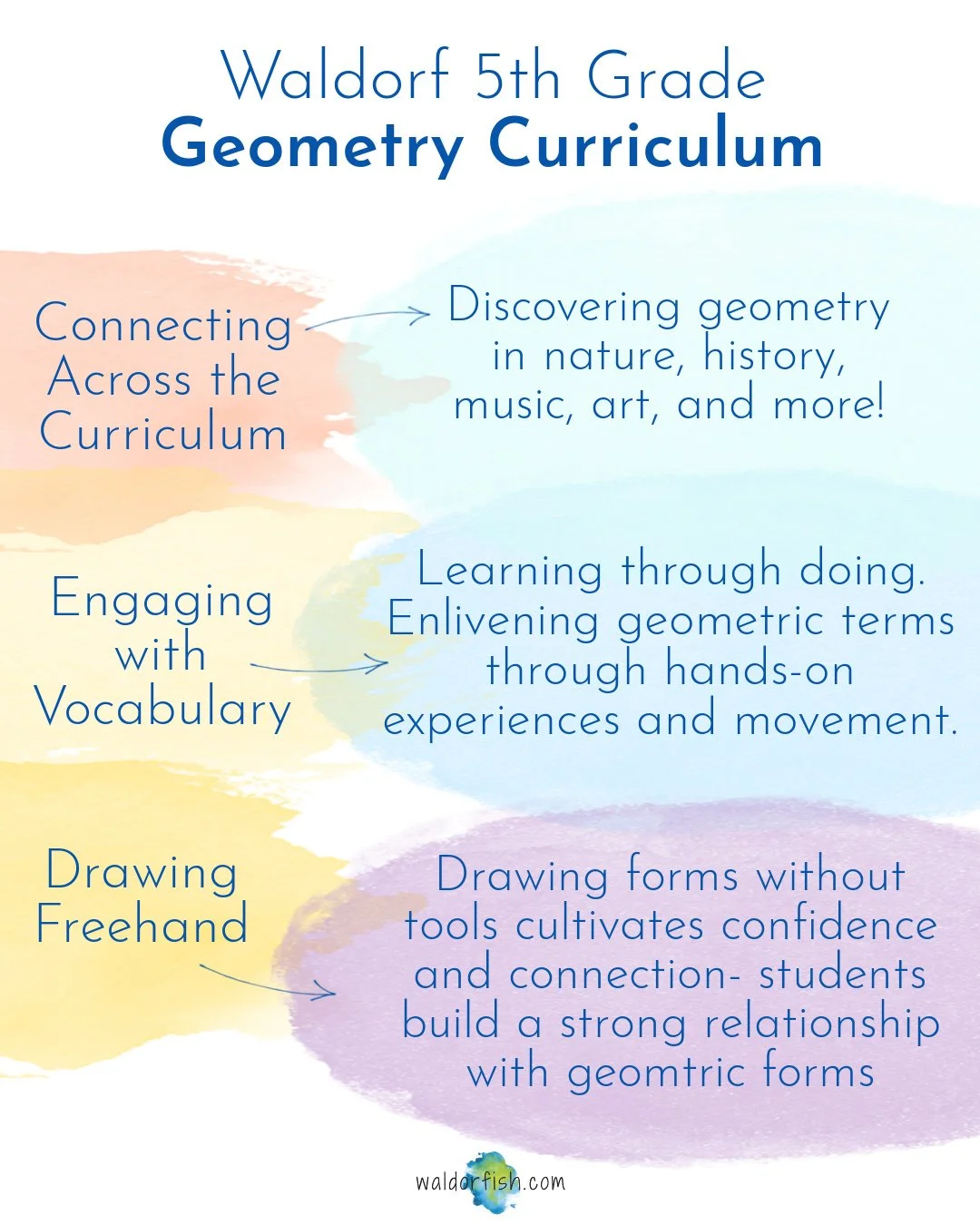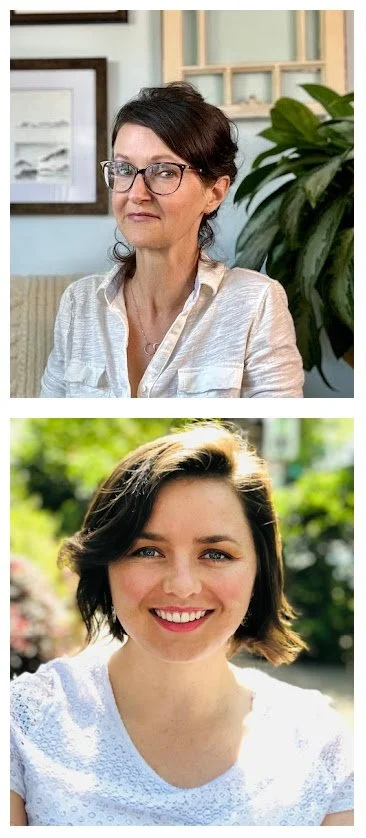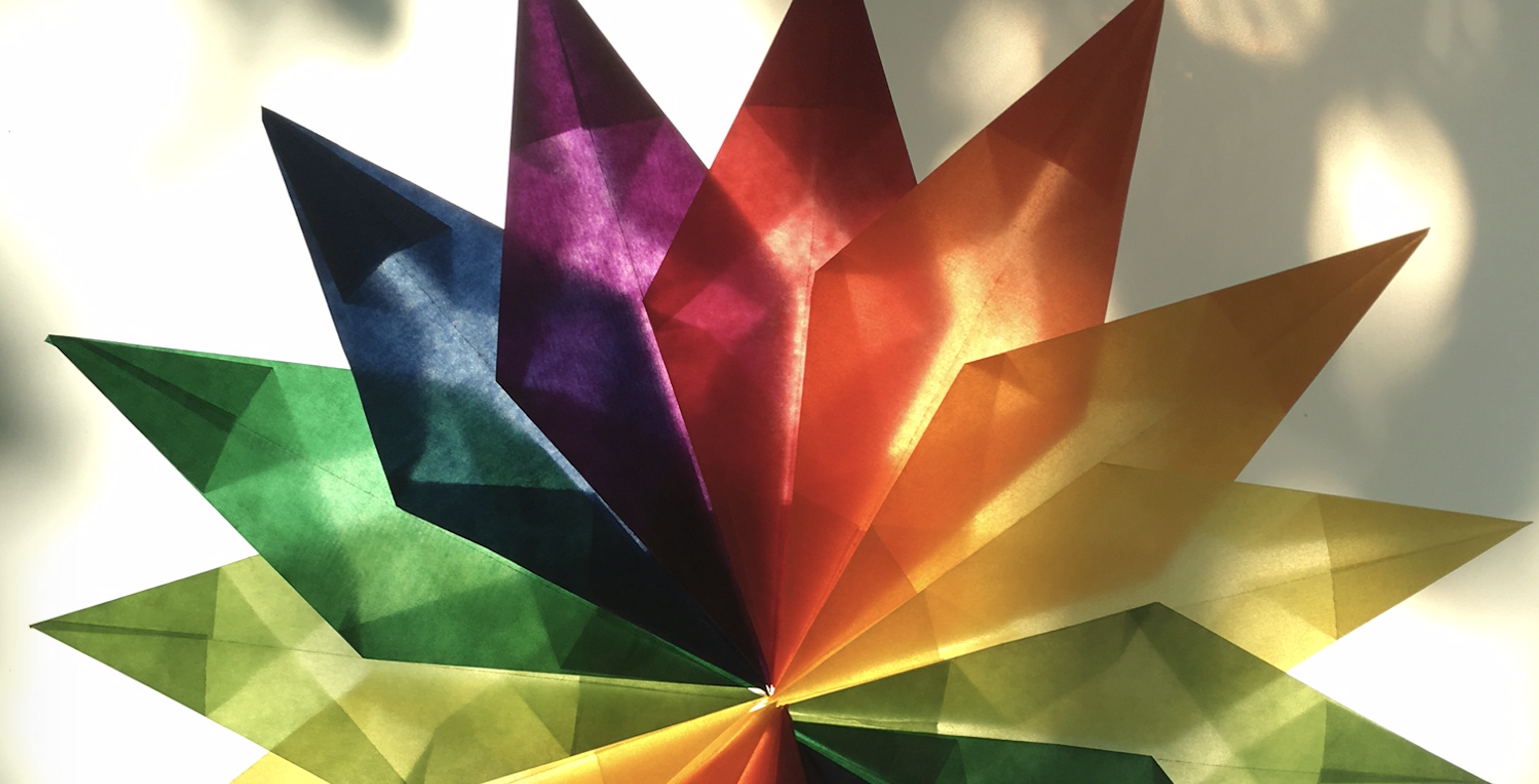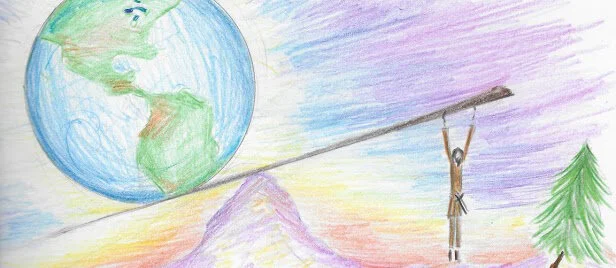
Waldorfish Blog
The Beauty and Challenge of Eighth Grade Geometry
Waldorf eighth grade geometry works with forms from different points of view.
Eighth grade marks the culmination of the middle grades in Waldorf education, and the curriculum is designed to meet students with new levels of challenge - both intellectually and artistically.
In the fifth, sixth, and seventh grades, the Geometry curriculum evolves beautifully: students move from freehand geometric drawing, to using tools to create foundational forms, and then to exploring analytical concepts intertwined with patterns and artistic expression.
By eighth grade, something new and exciting begins - students step into the world of three-dimensional geometry, working with the remarkable Platonic Solids.
These are five perfectly symmetrical 3D shapes - the tetrahedron, cube, octahedron, dodecahedron, and icosahedron - each with its own unique combination of faces, vertices, and edges.
Why Eighth Grade?
At this age, students are ready for new kinds of thinking. Their capacity for abstract reasoning is growing rapidly, and they’re able to hold complex forms and relationships in their minds in a way that wasn’t possible just a year or two earlier.
From the perspective of brain science, this is no coincidence.
Platonic Solids are the focus of Waldorf eighth grade geometry.
During adolescence, the prefrontal cortex - the area of the brain responsible for reasoning, planning, and seeing patterns - undergoes major growth and rewiring. Engaging with geometric concepts like the Platonic Solids helps strengthen these neural pathways through the very process of visualizing, planning, and constructing something that bridges the abstract and the concrete.
Becoming the Mathematician
In eighth grade, the geometry curriculum moves fully into the realm of thinking.
Armed with skill and confidence in the tools of the geometer - and the experience of studying form and proportion in both nature and the human body - students begin to take on the mantle of mathematicians in the truest sense of the word: those who study the underlying forms of all things.
Enter: The Platonic Solids!
Students engage with these shapes on many levels - philosophically, artistically, and mathematically. Plato himself associated each solid with one of the classical elements and the twelve constellations, inspiring students to consider the harmony and order inherent in the universe. They explore the qualities of numbers, the relationships between shapes, and the ways these solids appear in nature - from crystals to flowers to the structure of the human body itself.
Art, Math, and Mind in Motion
As in all Waldorf geometry, art and math work as one.
Students draw the Platonic Solids with compass and straightedge, then design 2D nets to construct 3D models. Through this process, they experience how geometry moves from the abstract to the tangible.
Each step requires spatial reasoning, careful observation, and meticulous craftsmanship - skills that mirror the kind of focused, flexible thinking adolescents are developing neurologically at this stage. This hands-on work not only refines fine motor control but also helps balance the maturing adolescent brain, which thrives when both analytical and artistic processes are engaged together.
Class is in session: A chalk drawing from a Waldorf eighth grade geometry block.
A Classroom Alive with Form
There is no single way to approach the Platonic Solids. Walk into an eighth-grade classroom, and you might see these geometric wonders transformed into mobiles, centerpieces, or softly glowing lanterns. However they appear, they are always the result of deep thought, patience, and a growing sense of inner order.
Looking Beyond What Meets the Eye
By the end of eighth grade, students begin to recognize that there is always more than meets the eye. The geometry curriculum has given them not only tools for measurement and observation, but also for seeing the world as a place of underlying harmony and structure.
Through their study of form - both beautiful and precise - they learn to describe what they can see, and to reason about what exists in the unseen, abstract world of ideas.
About the Authors
Robyn Beaufoy is Waldorfish’s CEO, and also a course instructor for Simple Season, Waldorf Art for Beginners, and Weekly Art Foundations. You’ll find her intuitive touches and influences throughout everything Waldorfish offers. Robyn has been in the world of education for over 25 years, with an MA in Education and a certification in Waldorf teaching - she also homeschooled both of her children for some of that time. In 2012 Robyn co-founded Waldorfish.com, creating it with the vision of making Waldorf inspired-art and pedagogy more accessible, joyful, and doable for homeschoolers all over the world.
Caitlin Amajor is Waldorfish’s course instructor for Geometry grades 5 & 6, Botany, and Geology as well as our Administrative Assistant. From a young age, Caitlin has been immersed in Waldorf education, attending a Waldorf school from K-8. After receiving a BA in History, Caitlin gained her certification in Waldorf teaching, and spent seven years as a Waldorf class teacher in the upper grades. With a special fondness for watercolor painting and geometry, Caitlin loves bringing Waldorf education to her students all over the world, and seeing their own individuality and style bloom from the curriculum!
Why Seventh Grade Geometry in Waldorf Education is So Much More Than Math
In Waldorf education, seventh grade marks a time of profound transformation. The child is entering adolescence - curious, questioning, and more emotionally aware than ever before.
Example work from Grade Seven Geometry curriculum.
It’s a phase where students begin to look both inward and outward with new intensity, seeking meaning, structure, and truth in the world around them.
This is precisely why the seventh grade geometry curriculum is such a perfect fit: it weaves together logic and beauty, discovery and structure, the artistic and the analytical.
Geometry in seventh grade builds on the strong foundation laid in earlier years. In fifth and sixth grade, students explored the natural forms of geometry - think of the hexagons in a beehive or the spirals of a sunflower - while gaining comfort using a compass and straightedge. They practiced freehand constructions that mirrored the work of the Ancient Greeks, and they learned to appreciate geometry not as abstract math but as a living language of form and proportion.
Now, in seventh grade, the curriculum deepens and expands. Geometry becomes a journey of exploration - across time, culture, and perspective. Students revisit Ancient Greek ideas through the lens of Renaissance artists and architects. They investigate how geometry shows up in the human body (like in Leonardo da Vinci’s Vitruvian Man), in Gothic cathedrals, and in the natural world through phenomena like the Fibonacci sequence. Geometry becomes a kind of time travel - linking the student with thinkers and creators across history.
For example, rather than simply memorizing formulas, a seventh grader might explore area by constructing a golden rectangle using only a compass and straightedge, then identify the golden ratio in pinecones, flower petals, or seashells.
Or they might discover the value of Pi not by being told it's 3.14159… but by physically measuring circles in nature - wrapping string around a tree stump or tracing circular stones - and calculating the ratio of circumference to diameter.
The moment they realize that the answer is always just a little bit more than three is a revelation, especially when they learn that this irrational number continues forever without repeating - just like some of life’s biggest questions.
In Waldorf education, we understand that seventh graders are beginning to see themselves as separate individuals.
They want to test what is true. So it’s no surprise that they take real delight in uncovering geometric truths. Proving the Pythagorean Theorem using ancient visual methods - like drawing squares on the sides of a triangle and physically rearranging them to prove equivalence - gives students a hands-on way to engage in abstract thinking. It shows them that some things can be known, that there are universal laws, and that their own reasoning and observation can uncover them.
Geometry at this stage also encourages discernment and builds trust in one’s own inner capacities. Adolescents are often swimming in a sea of emotion and change, but patterns like those in sacred geometry or the Fibonacci sequence offer grounding and reassurance. Amid the swirling questions of identity and belonging, geometry quietly says: “Some things are constant. Some things make sense.”
And perhaps that’s the greatest gift of seventh-grade geometry in the Waldorf curriculum.
It’s not just about mastering content; it’s about helping students feel connected - to truth, to history, to the natural world, and to their own sense of wonder.
About the Authors
Robyn Beaufoy is Waldorfish’s CEO, and also a course instructor for Simple Season, Waldorf Art for Beginners, and Weekly Art Foundations. You’ll find her intuitive touches and influences throughout everything Waldorfish offers. Robyn has been in the world of education for over 25 years, with an MA in Education and a certification in Waldorf teaching - she also homeschooled both of her children for some of that time. In 2012 Robyn co-founded Waldorfish.com, creating it with the vision of making Waldorf inspired-art and pedagogy more accessible, joyful, and doable for homeschoolers all over the world.
Caitlin Amajor is Waldorfish’s course instructor for Geometry grades 5 & 6, and Botany, as well as our Administrative Assistant. From a young age, Caitlin has been immersed in Waldorf education, attending a Waldorf school from K-8. After receiving a BA in History, Caitlin gained her certification in Waldorf teaching, and spent seven years as a Waldorf class teacher in the upper grades. With a special fondness for watercolor painting and geometry, Caitlin loves bringing Waldorf education to her students all over the world, and seeing their own individuality and style bloom from the curriculum!
Waldorf 5th Grade: Weaving Geometry Throughout the Curriculum
“The Crown” form found in our grade five geometry course.
Waldorf fifth grade curriculum includes a variety of subjects to explore.
It is particularly exciting because it is the first year history and science are introduced as stand-alone areas of study. Ancient Civilizations, Greek Mythologies and History, Botany, Decimals, and much more are explored using a variety of approaches, including (but not limited to!) art, music, and story.
One of our favorite aspects of the fifth grade curriculum is Geometry. Through a freehand approach, the fifth grader builds a strong relationship to geometry within their own bodies, and is prepared for the more complex work with tools that they will experience in sixth grade.
Geometry can be taught in block form in fifth grade (where the lessons are taught every school day over a three or four week period) and/or can also be sprinkled in throughout the school year - it is an ideal subject to be woven into other aspects of the curriculum.
Geometry fits in just about everywhere in the fifth grade year- here are several suggestions if you’re interested in weaving it all together:
Javelin throwing is a big part of the Pentathlon and can be a full-body way of exploring parallel lines, angles, arcs, and much more from the geometry curriculum!
Greek history: Greek architecture and art is filled with familiar forms that are found all throughout geometry in fifth grade and will also bring back an opportunity to review form drawing as well.
Movement: As students prepare for the Waldorf Pentathlon (a common activity for fifth graders), students and educators can explore the geometry behind movement. Angles of the javelin throw, symmetry in running strides, and the circular motion in discus throwing all connect back to geometry in a real-world way.
Botany: Flowers and leaves unfurl, bloom, and structure themselves in beautiful patterns naturally! Take the time to find these patterns through nature sketching, or on a hike, and discover just how orderly nature really is.
Ancient Civilizations: Mandalas evoke the beauty of Ancient India, the sculpture and carvings of Ancient Persia have repeating patterns- there is endless inspiration here for things to be created on main lesson book pages and other artwork!
Map drawing: Fifth grade is a wonderful time to bring in a more strategic and skillful approach to map drawing by using freehand grids. Maps can be drawn of students’ home towns, countries, ancient kingdoms, and much more.
One of the most beautiful aspects of Waldorf Education is how various subjects seamlessly weave into each other, and geometry is no exception!
Math into art, history into nature studies, music into movement- the possibilities are endless when it comes to creating a rich tapestry with the fifth grade curriculum.
Explore our blog!
About the Authors
Robyn Beaufoy is Waldorfish’s CEO, and also a course instructor for Simple Season,, Waldorf Art for Beginners, and Weekly Art Foundations. You’ll find her intuitive touches and influences throughout everything Waldorfish offers. Robyn has been in the world of education for over 25 years, with an MA in Education and a certification in Waldorf teaching - she also homeschooled both of her children for some of that time. In 2012 Robyn co-founded Waldorfish.com, creating it with the vision of making Waldorf inspired-art and pedagogy more accessible, joyful, and doable for homeschoolers all over the world.
Caitlin Amajor is Waldorfish’s course instructor for Geometry grades 5 & 6, and Botany, as well as our Administrative Assistant. From a young age, Caitlin has been immersed in Waldorf education, attending a Waldorf school from K-8. After receiving a BA in History, Caitlin gained her certification in Waldorf teaching, and spent seven years as a Waldorf class teacher in the upper grades. With a special fondness for watercolor painting and geometry, Caitlin loves bringing Waldorf education to her students all over the world, and seeing their own individuality and style bloom from the curriculum!
Waldorf 5th Grade Geometry Curriculum: Building a Strong Foundation
A freehand geometric form of growing circles.
In Waldorf curriculum, fifth grade marks the beginning of geometry studies.
Thus far, students have built their understanding of forms through Form Drawing lessons and their abilities in spatial awareness, pencil grip, balance and symmetry have grown through those experiences.
In fifth grade, it's time to jump into Geometry, and begin exploring its foundations!
The fifth grade child is in a particularly special time in childhood, often referred to as the “golden age.” Physically, they are balanced and graceful; stronger and more sure in their movements than that of a young child, and without the awkwardness that often marks the physicality of a teenager.
Inwardly, they are uniquely in-between the magic of early childhood and the realism of middle school. They are discovering a newfound curiosity and desire to understand how the world works in the present and what has happened in the past – all while finding beauty and magic in every aspect.
Finding beauty in truth- the fifth grader is ready to explore geometry!
Fifth grade geometry curriculum is rich, challenging, and fun!
Geometry is everywhere, and one aspect of the fifth grade curriculum is finding geometry in nature, history, and all around us! The pyramids of ancient Egypt, the columns of ancient Greece, petals on blooming plants in Botany, exploring the patterns of music: geometry fits into all these subjects in various ways. Fifth graders have a fascination for the world around them, and finding geometry in different and unexpected places cultivates an appreciation and sense of wonder for the subject.
With geometry comes a whole new set of vocabulary and meanings, and it is important that the fifth grader explores these in a way that feels alive and engaging.
Instead of simply memorizing terms and definitions, vocabulary can be explored through movement and hands-on experiences to forge connections. For example, instead of discussing what “circumference” means, a fifth grader may walk the circumference of a large circle drawn with chalk. A “diameter” and “radius” can be created with popsicle sticks; quadrilaterals can be compared through a dramatic skit about the evolution of angles and sides. The fifth grader gains true understanding of vocabulary through doing, exploring, and connecting.
Drawing freehand is a key aspect of the fifth grade curriculum- no tools just yet, as those will be introduced in sixth grade. The fifth grader is experiencing a balance and symmetry in their own physical bodies and inner life that will soon change through puberty, so it is a truly perfect time to cultivate their relationship with geometry without leaning on anything other than their own skills and abilities.
Drawing freehand is all about practice and improvement- not perfection!
With finding geometry in nature and experiencing its language through doing, the fifth grader dives into drawing forms. Variations of triangles, circles, and quadrilaterals are drawn throughout many practice sessions, all culminating in a “final form” which is beautifully shaded and created with care and effort.
In a practical sense, the practice of drawing builds their capacities in creating geometric forms that are accurate and balanced. As well, drawing freehand connects the child with geometry on a deep soul level, because they have experienced it in a direct and organic way.
Geometry curriculum evolves with the growing child as they progress through middle school and beyond. The sixth grader will learn to use tools, the seventh grader finds patterns and sequences, and the eighth grader shifts their thinking into the abstract and 3D world.
But to move forward into the upper grades and the ever more complex world of geometry, the student needs a strong and true foundation that is cultivated through the fifth grade curriculum.
Are you looking to bring freehand geometry into your homeschool classroom? We can help!
Click here to learn more about our course that provides a full year’s worth of geometry curriculum for the growing fifth grader.
About the Authors
Robyn Beaufoy is Waldorfish’s CEO, and also a course instructor for Simple Season (coming soon!), Waldorf Art for Beginners, and Weekly Art Foundations. You’ll find her intuitive touches and influences throughout everything Waldorfish offers. Robyn has been in the world of education for over 25 years, with an MA in Education and a certification in Waldorf teaching - she also homeschooled both of her children for some of that time. In 2012 Robyn co-founded Waldorfish.com, creating it with the vision of making Waldorf inspired-art and pedagogy more accessible, joyful, and doable for homeschoolers all over the world.
Caitlin Amajor is Waldorfish’s course instructor for Geometry grades 5 & 6, and Botany, as well as our Administrative Assistant. From a young age, Caitlin has been immersed in Waldorf education, attending a Waldorf school from K-8. After receiving a BA in History, Caitlin gained her certification in Waldorf teaching, and spent seven years as a Waldorf class teacher in the upper grades. With a special fondness for watercolor painting and geometry, Caitlin loves bringing Waldorf education to her students all over the world, and seeing their own individuality and style bloom from the curriculum!
Looking for something?
Welcome to Waldorfish! We started this adventure in 2012 out of a desire to make Waldorf training more accessible to class teachers in remote locations and to homeschooling families everywhere! Read more, click here.
WE WON! Our Weekly Art courses were voted “best interactive art program.” Learn more about the award, here.
A few of our most popular blog posts:
